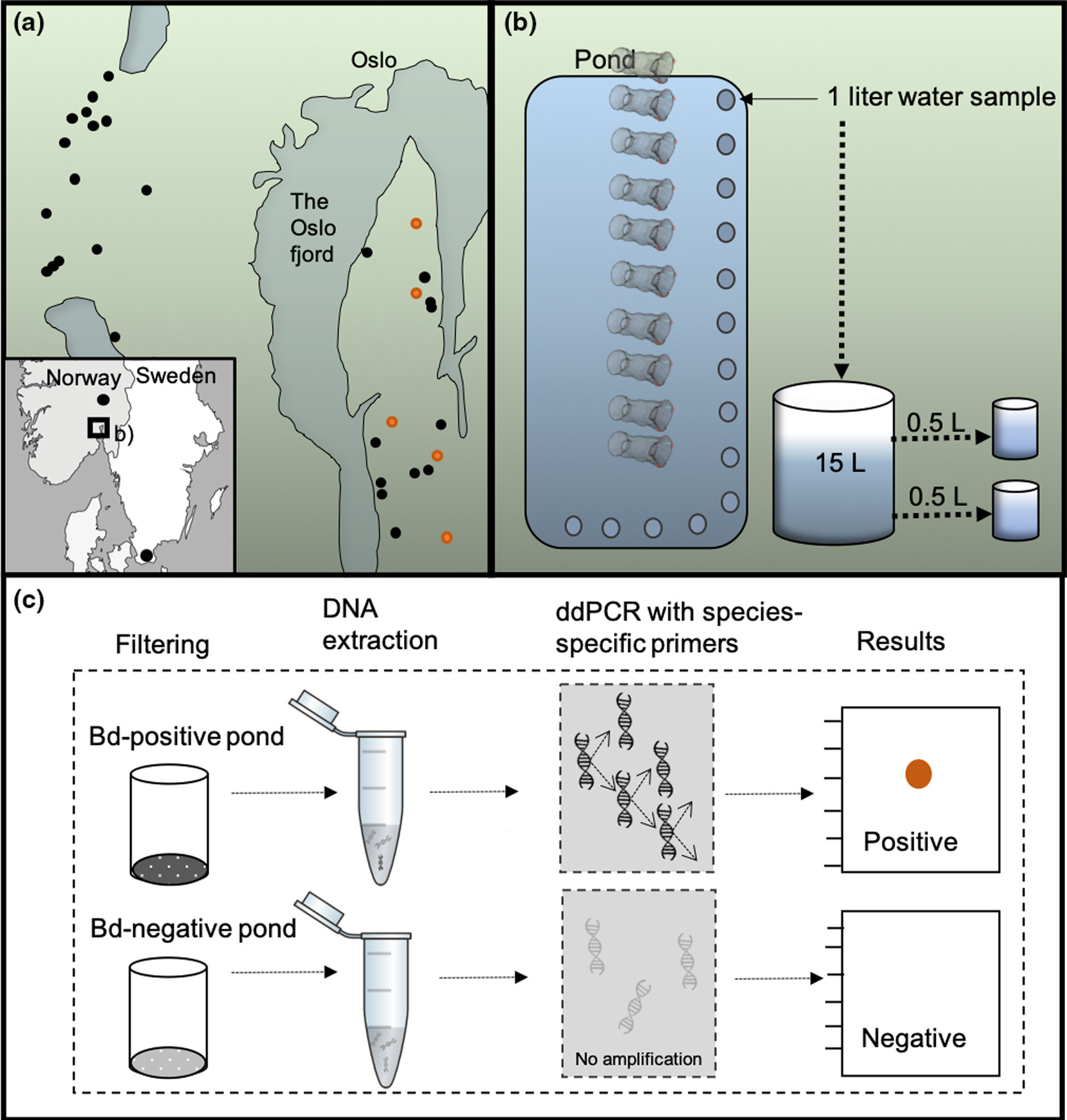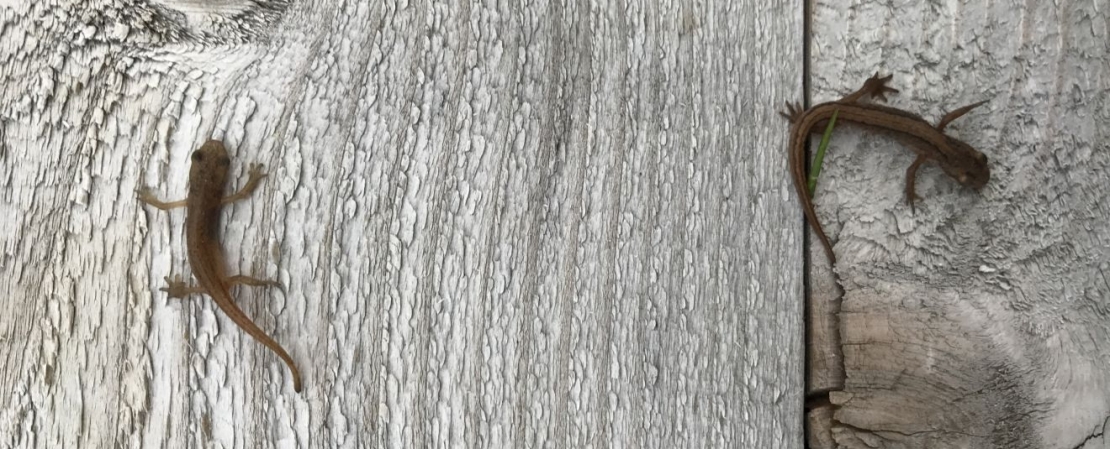We have a pleasure to present the first publication related to the ECOPOND project:
Annette Taugbøl, Kim Magnus Bærum, Børre K. Dervo, Frode Fossøy, ‘The first detection of the fungal pathogen batrachochytriumdendrobatidis in Norway with no evidence of population declines for great crested and smooth newts based on modeling on traditional trapping data’ Environmental DNA. 2021;00:1–9. doi.org/10.1002/edn3.180
Annette Taugbøl, one of the PI of the ECOPOND project (representing NINA, Norway) and its WP2 leader: Environmental DNA (hereafter eDNA), is all the DNA that is floating around, shed by species living in or around an area. In this paper, we explored eDNA as a method for species detection and possible links to population sizes of great crested newt and smooth newt in a number of filtered water samples from the Oslo-fjord area. In addition, we also tested the samples for an invasive pathogenic fungus (Batrachytrium dendrobatidis, hereafter Bd) that are associated with population declines and extinction of amphibian species. We detected Bd in five water bodies on the eastern side of the fjord, and concentrating on previously sampled catching data (going back to 2013) for the ponds in this area, we did not find any evidence for population declines in the infected ponds. The reason for this can be many, one being that the newts are not particularly negatively affected by the infection, another explanation can be that the fungi has not been around in the ponds for a long enough time, and the low concentrations are yet too low for any major negative consequences.
 (a) Map is showing the positions of the 31 sampling sites marked as black (Bd‐negative) and orange (Bd‐positive) points and their location in Norway.
(a) Map is showing the positions of the 31 sampling sites marked as black (Bd‐negative) and orange (Bd‐positive) points and their location in Norway.
(b) Each pond was first sampled for a total of 15 L of water from 15 sampling sites using a beaker, and two samples of 0.5 L were filtrated from the batch of 15 L. The area of water sampling in the pond corresponded to the area that was monitored for catch data using traps.
(c) DNA was extracted from the preserved filter and included in a ddPCR. When target DNA is present, the primers amplify the DNA and the reaction results in three or more positive droplets in the ddPCR‐analysis
The research leading to these results has received funding from the Environment Agency, the County Governor of Oslo and Akershus (ID 17010567), and the Norwegian Financial Mechanism 2014-2021, Project no. 2019/34/H/NZ8/00683 (ECOPOND).



